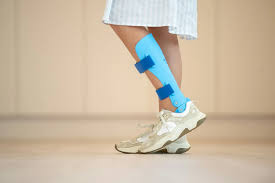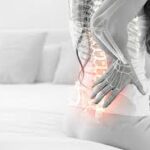When most people think about posture, they often focus on the position of the spine or shoulders. While these areas are critical, proper alignment begins with the feet. The way we stand, walk, and move all start at ground level. Custom orthotics are specially designed shoe inserts tailored to the unique shape and structure of an individual’s feet. Unlike over-the-counter insoles, they are made using detailed measurements, foot scans, and assessments conducted by medical professionals. The goal is not just to add comfort but to correct biomechanical imbalances that affect the entire body.
What’s The Link Between Feet and Body Mechanics?
Our feet act as the foundation for everything above them. If that foundation is unstable or misaligned, the rest of the body compensates in ways that often cause strain or discomfort. People with flat feet, high arches, or uneven weight distribution may experience problems not only in their feet but also in their knees, hips, and lower back.
These compensations alter the natural movement pattern, leading to an unhealthy gait. A person may walk with a subtle limp or shift their weight improperly without even realizing it. Over time, these minor irregularities can cause significant issues with balance, posture, and even chronic pain. Custom orthotics help prevent this chain reaction by restoring correct foot alignment and movement.
When the feet are positioned properly, the ankles, knees, and hips follow suit. This reduces excess strain on joints and muscles and encourages a more efficient walking pattern. The result is improved posture and decreased risk of injury, especially in people who spend long hours standing or walking.
How Are Custom Orthotics Made?
The process of creating custom orthotics begins with a comprehensive foot evaluation. A healthcare provider—often a podiatrist or physical therapist—will examine the patient’s gait, pressure points, and structural issues. Imaging or pressure mapping may also be used to gather precise data.
From this information, a lab produces orthotics that match the patient’s foot shape and movement needs. The inserts may vary in material and design depending on the intended use. Some are made for everyday wear, while others are designed for athletic shoes or specialized work footwear.
How Do These Support the Natural Gait Cycle?
Walking involves a complex cycle of movements, from heel strike to toe-off. When one part of the foot isn’t functioning correctly, it can throw off the entire rhythm. Custom orthotics are built to guide the foot through each step with proper mechanics. By aligning the foot during walking, orthotics reduce stress on surrounding tissues and help eliminate imbalances. This can be particularly beneficial for people recovering from injuries or dealing with conditions such as plantar fasciitis, tendonitis, or arthritis. Even in the absence of pain, individuals with uneven gait patterns may benefit from orthotics. Supporting natural movement patterns early can prevent future problems and make everyday activities more comfortable.
What are Other Benefits?
Custom orthotics offer both preventive and restorative benefits. For people without pain, they help avoid the development of posture-related problems. For those already experiencing discomfort, they can be part of a comprehensive treatment plan that restores normal function. Athletes, older adults, and people in physically demanding jobs often benefit the most. However, anyone can experience the advantages of proper support—especially when small biomechanical issues begin to affect daily movement. Wearing orthotics is not a cure-all. They work best when combined with stretching, strength training, and appropriate footwear. Still, they form a foundation for better movement that can impact every step a person takes.
Schedule a Custom Orthotics Consultation
Once integrated into daily life, custom orthotics often become indispensable. Many users report not only pain relief but also greater energy and comfort during everyday tasks. Improved posture reduces the physical toll of standing or walking for long periods. Regular check-ins with a provider are recommended to make sure the orthotics continue to meet the body’s needs. As people age or become more active, adjustments may be required. With proper care and fit, a good pair of orthotics can offer years of support and improve overall quality of life.





